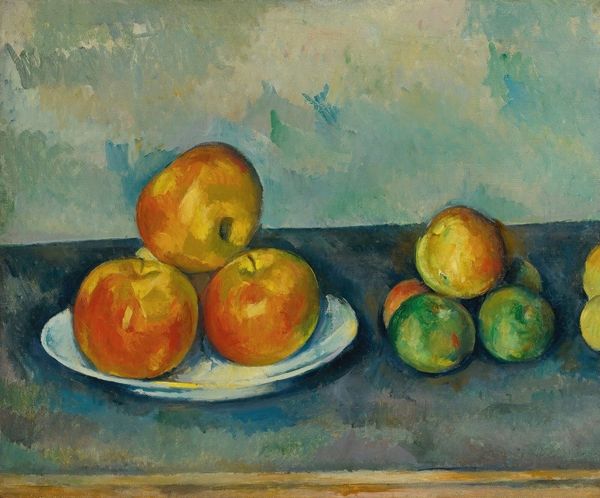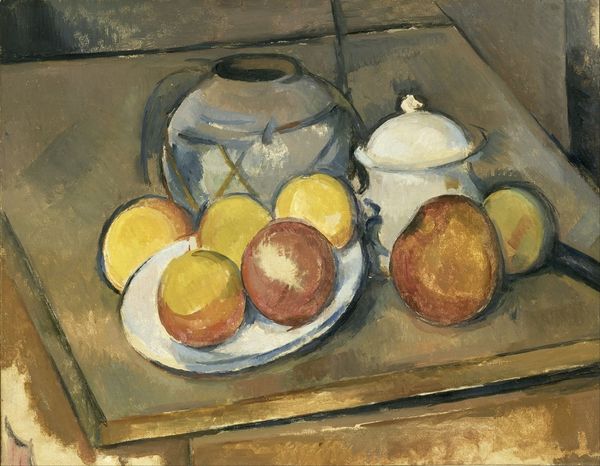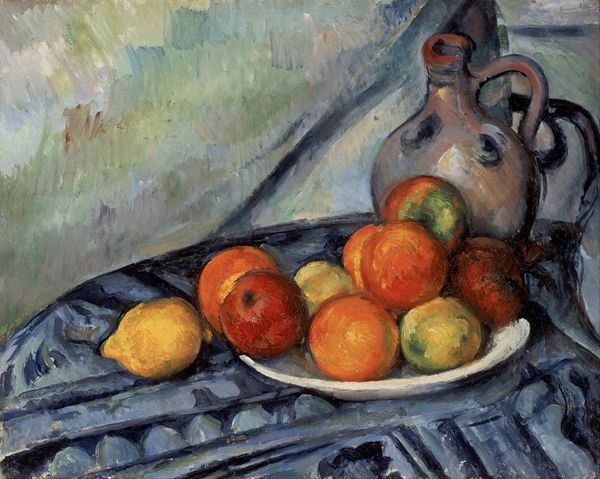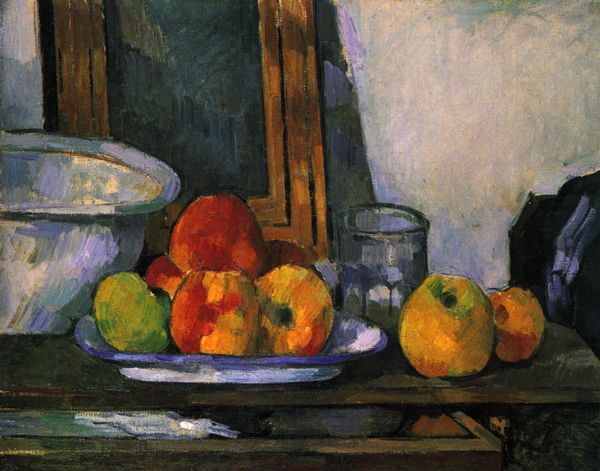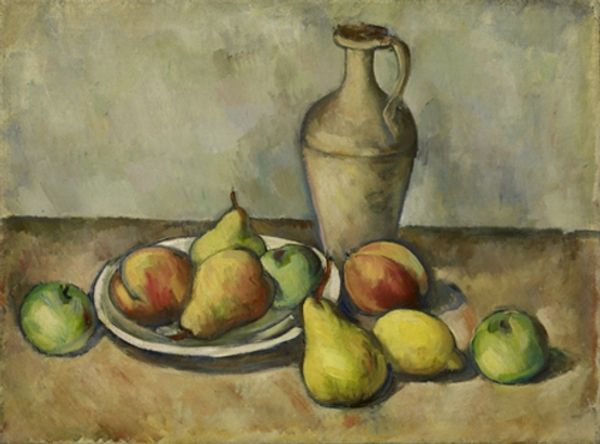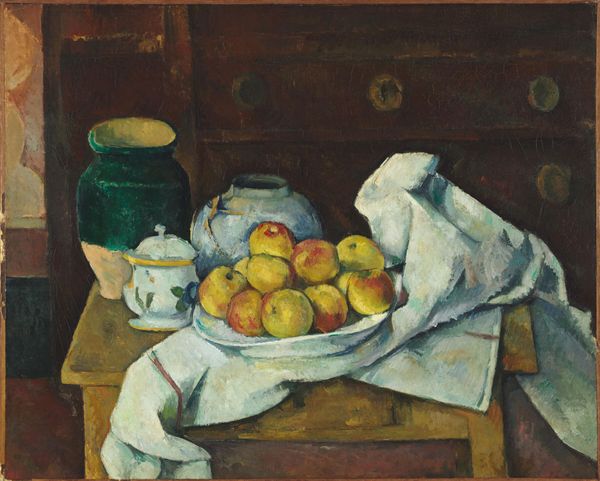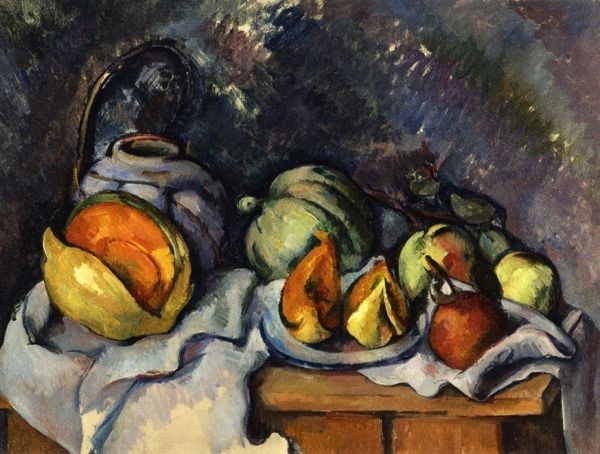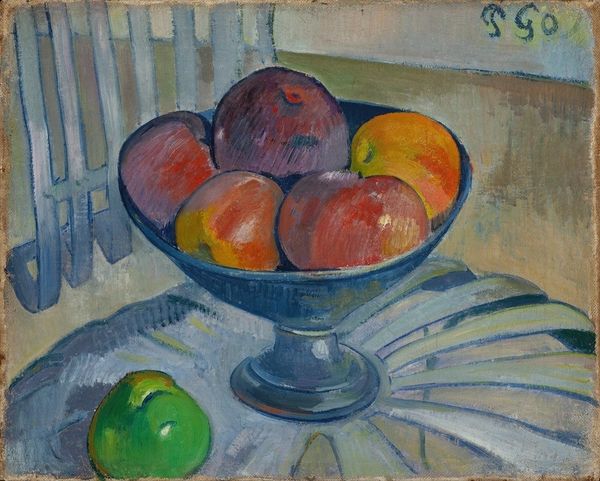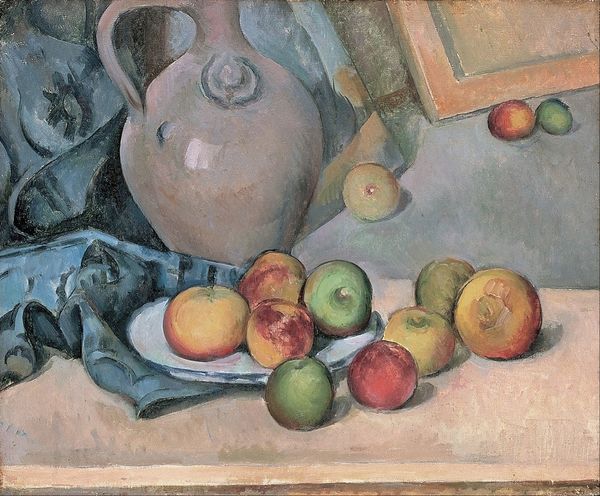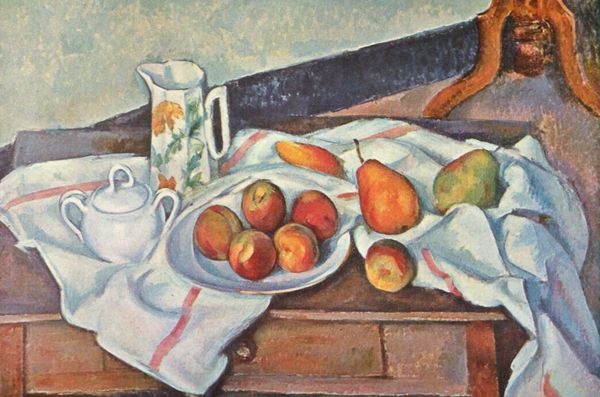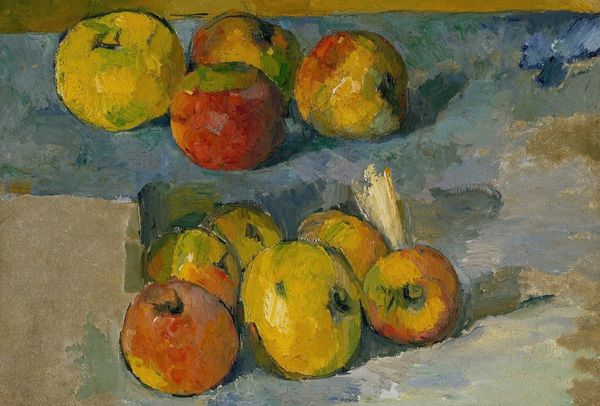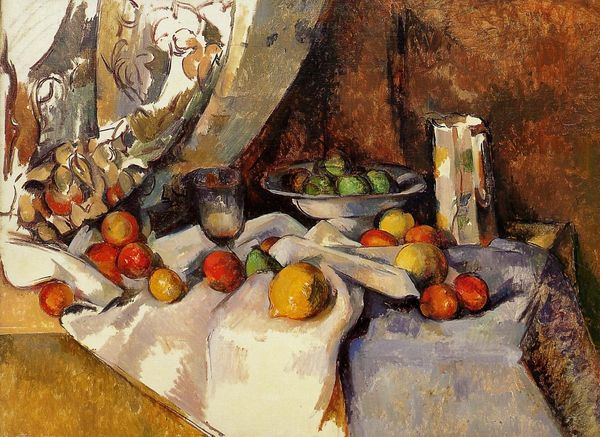
oil-paint, impasto
#
portrait
#
oil-paint
#
oil painting
#
impasto
#
post-impressionism
Dimensions: overall: 45.8 x 54.9 cm (18 1/16 x 21 5/8 in.) framed: 71.1 x 80 x 8.2 cm (28 x 31 1/2 x 3 1/4 in.)
Copyright: National Gallery of Art: CC0 1.0
Curator: This is Paul Cézanne’s "Still Life with Milk Jug and Fruit," painted around 1900. Look at the textured application of oil paint. It's really quite stunning! Editor: Yes, immediately I’m struck by how solid everything feels, almost sculptural. And yet, there's a sort of dreamlike distortion, especially in how the planes of the table tilt upward. Curator: It's interesting you say "dreamlike distortion," as one must consider the social shift into modernity that took place in late 19th-century Europe. The old institutions and norms no longer were applicable as an increasing amount of wealth centralized in the hands of the bourgeoisie, thus destabilizing the family, class, gender roles, etc. For the post-impressionists, and especially Cézanne, what does it mean to create under this social and material shift? Editor: Right, Cézanne’s often described as bridging Impressionism and Cubism, but to my eyes he also feels deeply connected to a much older tradition of vanitas painting, these symbolic arrangements of objects meant to remind us of mortality. The fruit here... it seems at its peak, yes, but also verging on overripe. Curator: I completely agree. It’s important to note that Cézanne made these works far from Paris, retreating from an environment increasingly oriented toward high society. Instead, we see domestic objects: fruits, pitchers, humble plates. These might have seemed mundane subjects to prior painters, but Cézanne treats them with this geometric complexity that’s, yes, both grounded and incredibly unsettling in his treatment of their forms. I am particularly compelled by the social reality of "humble" people eating "overripe" foods, which could speak to the social divide as more and more wealth centralized around city centers. Editor: I'm drawn to how he repeats motifs across his still lifes. This particular pitcher, with its delicate painted leaves, reappears in several paintings, like a personal symbol. What significance might that have held for him? Curator: I see these still life objects as placeholders for larger identity concerns: class, the gaze of male artists painting women, and a deconstruction of the values assigned to each within his contemporary, bourgeoise social scene. The simple choice of his subject becomes his disruption. Editor: Considering the painting's persistent sense of unease, it almost feels as though Cézanne were subconsciously anticipating some kind of disruption of this still life as the dawn of the 20th-century crept in, on both a societal and personal scale. Thank you for sharing! Curator: And thank you! Reflecting on "Still Life with Milk Jug and Fruit" through a modern social lens only underscores the prescient quality of this painting.
Comments
No comments
Be the first to comment and join the conversation on the ultimate creative platform.
